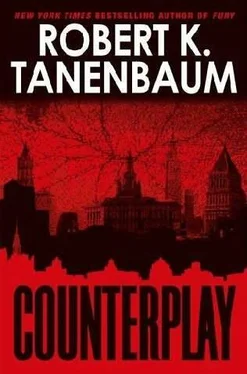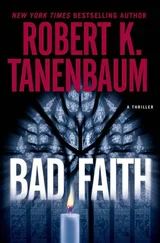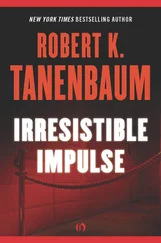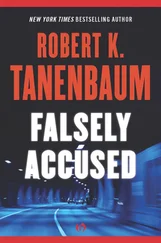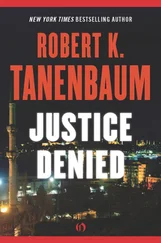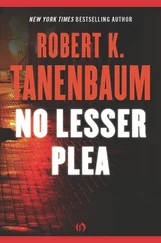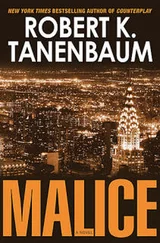Robert Tanenbaum - Counterplay
Здесь есть возможность читать онлайн «Robert Tanenbaum - Counterplay» весь текст электронной книги совершенно бесплатно (целиком полную версию без сокращений). В некоторых случаях можно слушать аудио, скачать через торрент в формате fb2 и присутствует краткое содержание. Жанр: Криминальный детектив, на английском языке. Описание произведения, (предисловие) а так же отзывы посетителей доступны на портале библиотеки ЛибКат.
- Название:Counterplay
- Автор:
- Жанр:
- Год:неизвестен
- ISBN:нет данных
- Рейтинг книги:4 / 5. Голосов: 1
-
Избранное:Добавить в избранное
- Отзывы:
-
Ваша оценка:
- 80
- 1
- 2
- 3
- 4
- 5
Counterplay: краткое содержание, описание и аннотация
Предлагаем к чтению аннотацию, описание, краткое содержание или предисловие (зависит от того, что написал сам автор книги «Counterplay»). Если вы не нашли необходимую информацию о книге — напишите в комментариях, мы постараемся отыскать её.
Counterplay — читать онлайн бесплатно полную книгу (весь текст) целиком
Ниже представлен текст книги, разбитый по страницам. Система сохранения места последней прочитанной страницы, позволяет с удобством читать онлайн бесплатно книгу «Counterplay», без необходимости каждый раз заново искать на чём Вы остановились. Поставьте закладку, и сможете в любой момент перейти на страницу, на которой закончили чтение.
Интервал:
Закладка:
Karp laughed, but they both knew that the only reason he was sitting next to Guma at the prosecution table was as an insurance policy. They hadn’t announced that Karp would be second chair and let the media find out on their own at a run-of-the-mill motions hearing.
As expected, Rachman had blown a fuse. What is this? she’d demanded to the press. A Joseph McCarthy witch hunt? Oppose me and we’ll pull out all the stops to see that your name is besmirched, your reputation destroyed, and your freedom imperiled.
Meanwhile, Stavros’s lawyers went to court demanding that the judge impose a gag order to keep Karp and his team from using this bit of grandstanding for political gain. Of course, they’d immediately ignored the gag order themselves. In fact, Stavros soon had a dream team of celebrity lawyers, all of them well-known TV talking heads, each of whom held his own press conference where they announced, among other things, that they’d sliced their fees in order to work on a case that was so obviously a miscarriage of justice.
“I’m okay,” Guma reassured Karp as Judge Lussman returned to the courtroom and asked him to call his witness in opposition to defense’s motion.
Addressing the judge, Karp said, “Your Honor, for purposes of a complete record, the people suggest that the court consider the testimony of our experts as part of a Daubert hearing. As the court is well aware, a Daubert hearing tests the scientific reliability and acceptability of the evidence in question. Also, Your Honor, we will ask for a similar Daubert hearing with respect to the repressed memory testimony that we intend to present to the jury.”
The way they’d laid out the workload of the trial, Guma was to give the opening statement, while Karp would sum up the people’s case for the jury. The reason was that the rigors of the trial might be too draining on Guma, and he might not have the energy for a lengthy closing argument on the final day. As far as the rest of it, Guma was going to handle the testimony of Zachary Stavros, and they would both take turns with the expert witnesses.
Guma then called Swanburg to the stand. After establishing Swanburg’s credentials qualifying him as an expert, Guma proceeded. “Dr. Swanburg, were you able to identify the remains through standard scientific means, such as those named by defense counsel?”
Swanburg shook his head. “No, the remains had skeletonized; there was no flesh on the hands for fingerprints. Nor was it possible to identify the deceased through dental records.”
“And why is that?” Guma asked.
“Well, it seems that some ten years ago, the office of Teresa Stavros’s dentist was burglarized and many files, including hers, disappeared,” Swanburg replied.
“Objection,” Anderson said. “ If Your Honor allows any of this testimony about the remains, I insist that the witness be prohibited from testifying about why Mrs. Stavros’s files are missing. They’re obviously trying to imply that those records were removed as part of a coverup. There’s no evidence that this burglary had anything to do with her files in particular, or anybody else for that matter.”
“It’s a simple fact, Your Honor,” Guma said.
“Overruled,” the judge said. “Mr. Anderson, you may make all the appropriate motions in limine prior to trial. As far as we are concerned at this hearing, the witness simply stated that a burglary occurred and files were missing, among which were Mrs. Stavros’s. For the record, Mr. Guma, you can satisfy this point concerning the burglary by producing a police report.”
Guma nodded and scribbled a note on his yellow legal pad.
“Very well, please proceed,” the judge directed.
“Yes, Your Honor,” Guma replied and turned back to Swanburg. “What about DNA comparison?”
Swanburg shook his head. “We weren’t able to come up with anything there either,” he said. “Again we were hampered by the deterioration of the remains due to weather, insect activity, and the normal processes. We did attempt to compare hair found in the site with that of Mrs. Stavros’s only known blood relative, her son, Zachary, but all we can state is that they are ‘scientifically similar,’ but the same can be said with too large a percentage of the population to say ‘to a scientific certainty,’ which is the forensic standard. We also tried to extract marrow left in the bones, which can be used for blood typing as well as DNA testing, but again we were stymied by decomposition. We even attempted to extract pulp from one of her molars for the same purpose, but with the same result.”
Guma turned to his next question. “Dr. Swanburg, can you tell the court how long, within a time frame, the remains had been in the grave.”
“Objection,” Anderson called out. “Here is another point, Your Honor, at which the prosecution witness will be testifying about guesswork that has not been accepted as standard in the scientific community. In fact, any two scientists could debate these suppositions indefinitely without reaching an answer that satisfies the threshold of reasonable degree of scientific certainty.”
“Well, that’s what we’re doing here, Mr. Anderson,” the judge said. “I’m listening to this gentleman, and any other witnesses, to determine whether it will be allowed into evidence at trial. Now, I’d like to hear what Dr. Swanburg has to say. I’ll rule on it then.” He looked at Swanburg. “You may answer the question.”
“I can’t give you an exact day, but we have ways of getting pretty close,” Swanburg said. “For instance, we know that the body was buried for a number of years before cement was poured over the gravesite. We know this because when we exhumed the remains, my colleague in the back of the courtroom, Dr. Charlotte Gates, noted plant roots that had grown through the rib area. As it turns out, the roots were from a rosebush; however, the rosebushes formerly above the site had been removed when the cement was poured, at which point the roots stopped growing and died.”
Swanburg turned in the witness seat and looked over at the judge. “Are you with me still?”
Amused, the judge nodded. “So far, Dr. Swanburg, even if my wife accuses me of doddering senility.”
“Know what you mean, Your Honor,” Swanburg chuckled. “Anyway, we know from the growth rings of the rose roots-roots have rings just like a tree that indicate age-that they had pierced the wall of the grave and grew into the corpse for at least two years before the plant was removed. We also know that the cement for the patio was poured in 1994, according to records from Manhattan Concrete, Inc. So that would mean that the roots had been growing in the grave since at least 1992. And, of course, after the grave was dug, it would have taken one to three growing seasons-depending if the plant had been disturbed by the digging-to reach the wall of the grave. So that pushes our timetable back to the grave having been dug sometime between 1989 and 1992.”
Guma didn’t have much more for Swanburg and turned him over to Anderson. “Let’s start with the last issue first,” the attorney said. “Do you know within a scientific certainty that the roots in the grave are the roots of a plant removed when the cement was poured?”
“It’s the scenario that makes the most sense.”
“Is that a yes or no?”
“That would be a ‘no,’ not absolutely certain.”
“Then the roots in that grave could actually be much older than a plant killed by the pouring of cement in 1994?”
“Yes, I suppose.”
“In fact, the grave could have been dug, and the victim interred at some point in the distant past before Mr. Stavros even purchased the home. Those roots could have ‘pierced the grave,’ as you put it, years before Mrs. Stavros left her home.”
Читать дальшеИнтервал:
Закладка:
Похожие книги на «Counterplay»
Представляем Вашему вниманию похожие книги на «Counterplay» списком для выбора. Мы отобрали схожую по названию и смыслу литературу в надежде предоставить читателям больше вариантов отыскать новые, интересные, ещё непрочитанные произведения.
Обсуждение, отзывы о книге «Counterplay» и просто собственные мнения читателей. Оставьте ваши комментарии, напишите, что Вы думаете о произведении, его смысле или главных героях. Укажите что конкретно понравилось, а что нет, и почему Вы так считаете.
